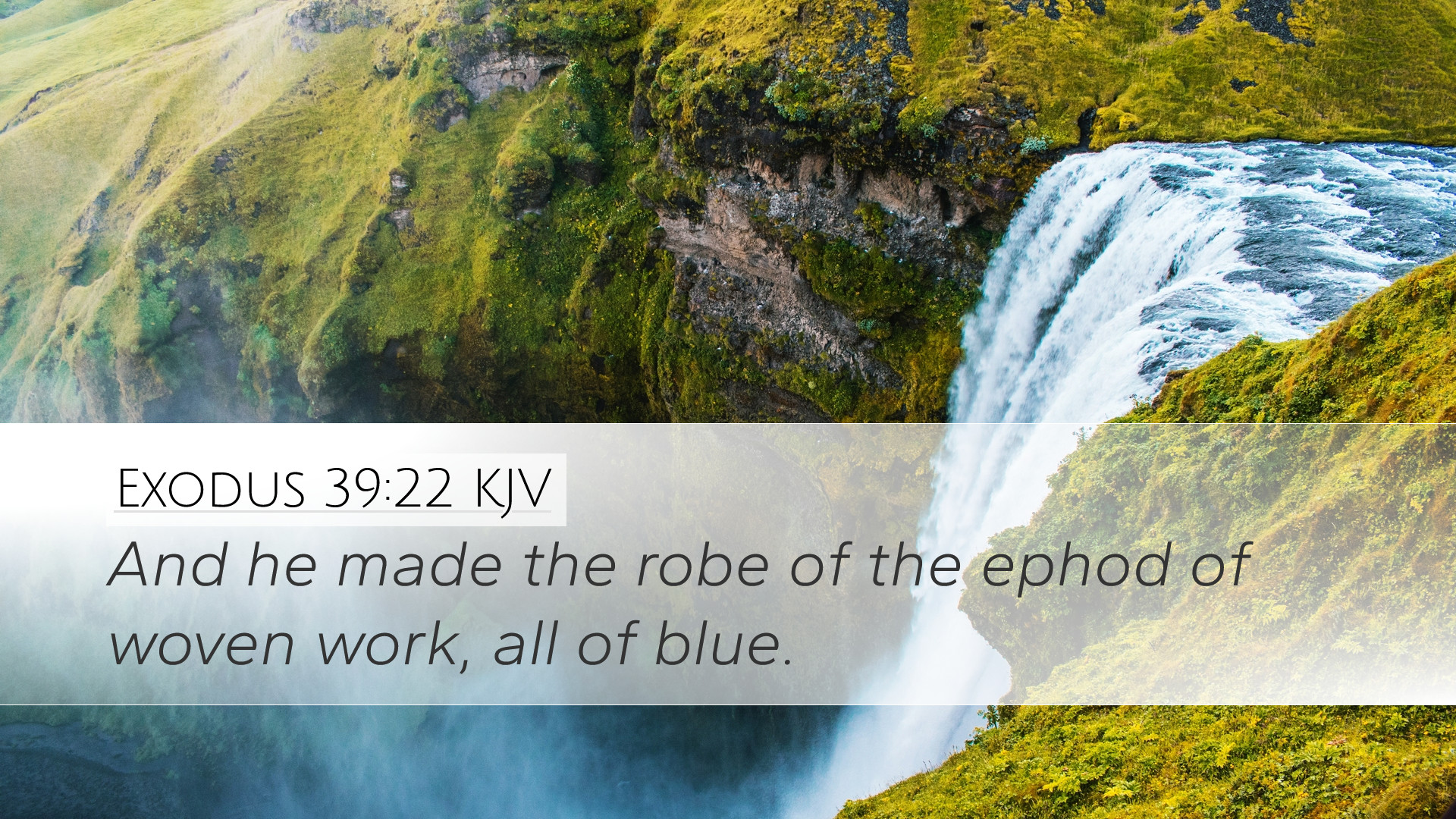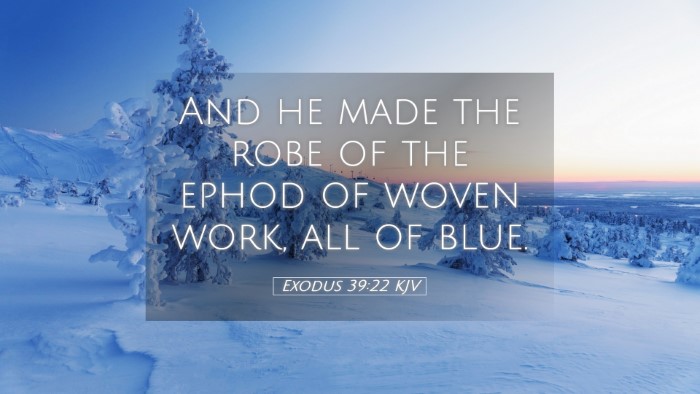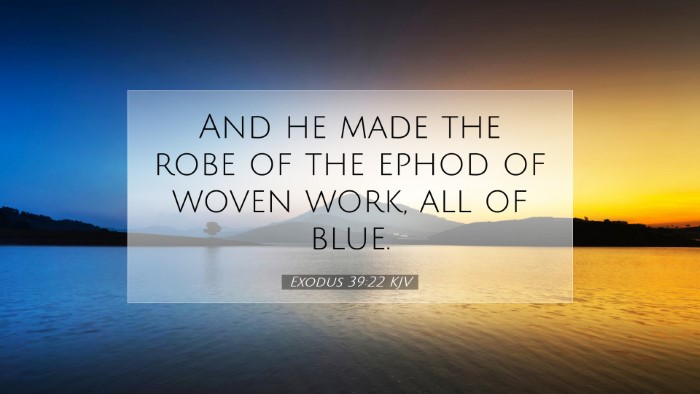Exodus 39:22 Commentary
Verse Text: “And he made the robe of the ephod of woven work, all of blue.” (Exodus 39:22, KJV)
Contextual Background
The book of Exodus narrates the journey of the Israelites as they escape Egypt and forge their identity as God’s chosen people. It details the establishment of the tabernacle, the priesthood, and the laws that govern their community. In this rich tapestry, Exodus 39 describes the garments of the high priest, who plays a crucial role in mediating between God and the people.
Commentary Insights
Matthew Henry's Perspective
Matthew Henry indicates that the robe of the ephod signifies not only the beauty of the priestly garments but also the majesty of Christ as the High Priest. The robe's color, deep blue, represents heavenly grace and is emblematic of Christ's divine nature. Henry draws attention to the meticulous craftsmanship, highlighting that such care in construction signifies the reverence with which God’s ministers should approach their duties.
Albert Barnes' Observations
According to Albert Barnes, the robe's construction “of woven work” signifies the intricacy of God’s design in providing for His people. Barnes explains that the blue specifically symbolizes heavenly things and serves as a reminder for pastors and leaders that their ministry is to reflect the character and holiness of God. He emphasizes that the robe is a part of a larger representation of the significance of priestly duties within the covenant community.
- Heavenly Significance: Barnes underscores the heavenly nature of God's calling for leaders.
- Preparation for Service: The careful preparation of the robe is a reflection of the seriousness of serving God.
Adam Clarke's Insights
Adam Clarke notes the symbolism of blue in the ancient Hebrew context, asserting that blue represented the heavens, and thus had a significant spiritual implication. Clarke highlights that the fabric's woven nature alludes to unity and strength, suggesting that true ministry must be grounded in the unity of believers under the Lord. He also draws parallels between the high priest’s garments and the righteousness believers are called to wear metaphorically.
Theological Implications
The priesthood in Israel serves as a foreshadowing of Christ's eternal priesthood. The high priest’s robe, particularly its color and craftsmanship, invokes the holiness, necessity, and beauty of Christ's redemptive work. The meticulous detail in its design invites theological reflection on the nature of God—His order, beauty, and accessibility to humanity through the mediatory role of Christ.
Practical Applications
This passage challenges church leaders today to reflect on their roles as mediators of God's grace. The beauty and significance of the robe provide a metaphor for the lives of believers—a call to live in holiness and represent Christ’s love and righteousness in the world.
- Embrace Holiness: Leaders are reminded to pursue personal holiness and reflect God’s character.
- Unity in Ministry: Reflecting on the fabric of the robe encourages unity among believers under Christ’s leadership.
Conclusion
Exodus 39:22 encapsulates profound truths about priesthood, representation, and divine calling. The insights from Matthew Henry, Albert Barnes, and Adam Clarke collectively present a rich theological understanding that remains relevant for today’s pastors, students, and scholars. In tracing the significance of the high priest's robe, we are invited to consider our own roles in God’s story, adorned with the righteousness of Christ and reflecting His glory in our ministries.


